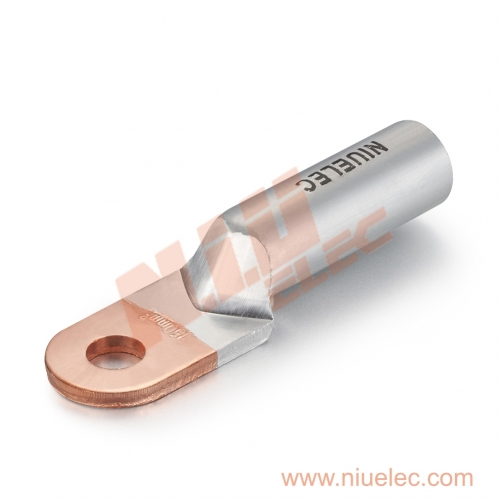Why Bimetallic Lugs Are the Preferred Solution for Power Distribution Systems
Table of contents:
Top Features That Make Bimetallic Lugs Suitable for High-Conductivity Applications
Comparing Bimetallic Lugs with Traditional Cable Lugs Types
How to Source From a Trusted Bimetallic Lugs Supplier for Volume Orders
Top Features That Make Bimetallic Lugs Suitable for High-Conductivity Applications
Bimetallic lugs are engineered with high-purity aluminum and copper materials to ensure unmatched conductivity. Aluminum alloys, usually at 99.5% purity, and copper, refined to 99.9%, form the core materials in these lugs. The fusion of these two metals is achieved through friction welding, a process that ensures durability and long-term reliability even under challenging conditions. Additionally, bimetallic lugs come prefilled with jointing compound to enhance conductivity and ease installation, eliminating the need for additional tools or treatment. This makes them ideally suited for applications where power losses need to be kept at a minimum. Their thermal performance and corrosion resistance also play pivotal roles in ensuring the connectors can withstand heavy loads, temperature fluctuations, and environmental exposure. These lugs are widely used in electrical power distribution and transmission systems, ensuring efficient and secure connections. Their robust design minimizes the risk of overheating, sparking, or failure, even in critical, high-performance applications.

Comparing Bimetallic Lugs with Traditional Cable Lugs Types
When analyzing various cable lugs types, bimetallic lugs clearly outperform many traditional options, especially when connecting copper and aluminum cables. Standard aluminum or copper lugs often fail to handle the challenges posed by dissimilar metal connections, as these can result in galvanic corrosion, decreased conductivity, and long-term structural degradation. Bimetallic lugs, however, offer a robust solution by providing a seamless transition, effectively insulating the connection area from chemical reactions and ensuring durability. For example, within industrial or utility-scale distribution systems, the longevity and efficiency of bimetallic lugs can reduce the total cost of ownership over time. Their superior performance in high-current, low-resistance systems positions them ahead of basic lugs, fostering trust among engineers, utility managers, and decision-makers. Additionally, bimetallic lugs mitigate maintenance requirements and enhance system reliability, making them the ideal choice for modern electrical infrastructure.
How to Source From a Trusted Bimetallic Lugs Supplier for Volume Orders
Sourcing quality bimetallic lugs requires working with reputable cable lug manufacturers that prioritize precision and compliance with industry standards. Look for suppliers that utilize advanced manufacturing technologies, like friction welding, to achieve the highest levels of durability. Additionally, ensure the supplier provides clear specifications, such as dimensions, purity levels, and load capacity, so you can choose models like the DTL-1 or DTL-2 that meet your project requirements. A good supplier will also highlight certifications, quality assurances, and references from previous clients to bolster your confidence in their product reliability. Many trusted bimetallic lugs suppliers also offer customization options, allowing you to design the lugs to your specific needs. For bulk orders, inquire about lead times, pricing, and logistics to ensure smooth and cost-efficient delivery for your supply chain.
The case for bimetallic lugs as the preferred choice in power distribution systems is irrefutable. Their unique ability to enhance conductivity, prevent corrosion, and provide unmatched durability makes them indispensable for modern electrical infrastructure. Whether you’re evaluating different cable lugs types or partnering with a trusted bimetallic lugs supplier, investing in these innovative connectors ensures long-term success and efficiency for your projects.